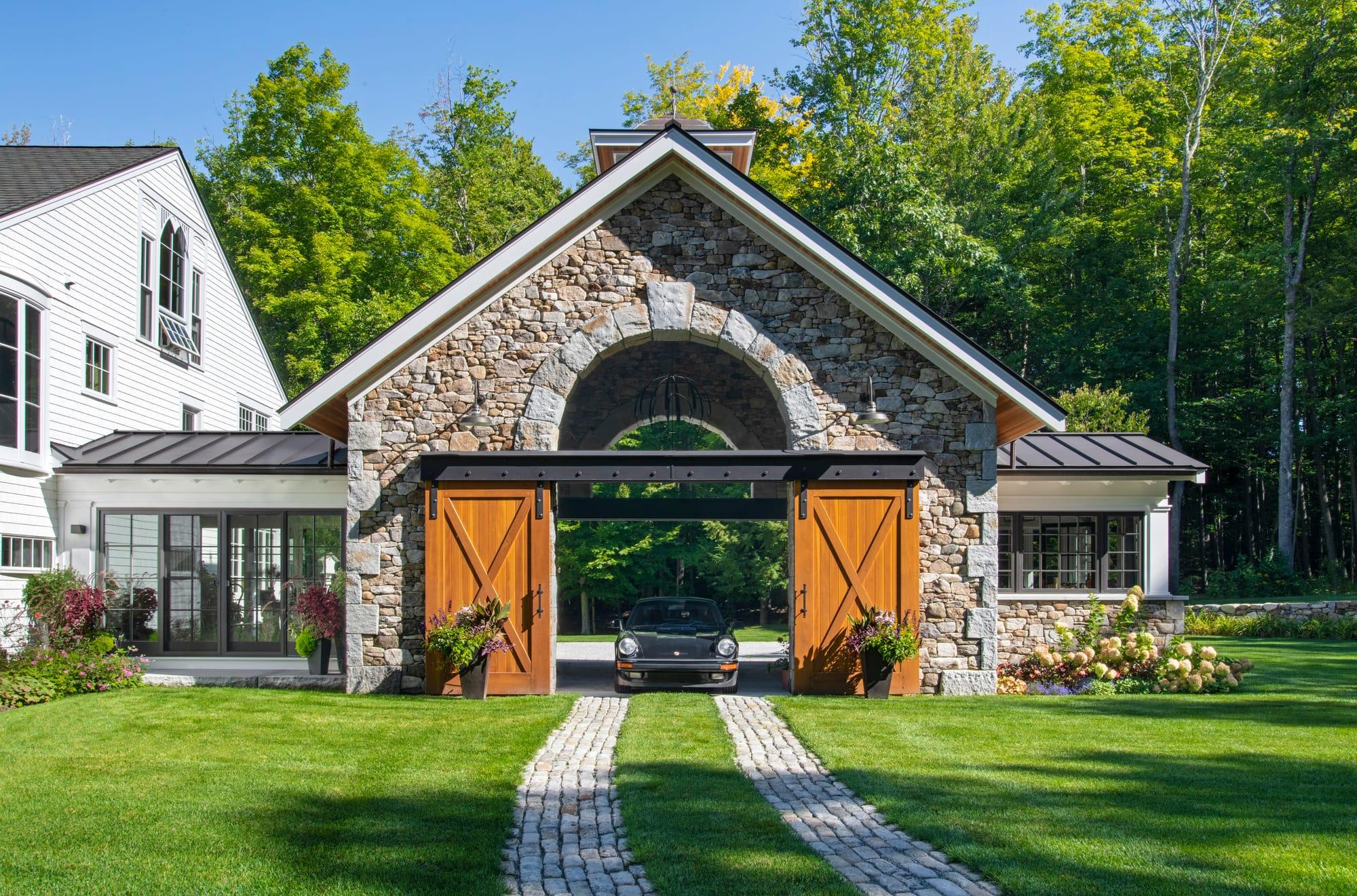Outgrown Fairy Lights? Here’s How to Elevate Your Lighting Game
Fairy lights are charming, but as your style evolves, so should your lighting. Embrace modern lighting solutions by layering ambient, task, and accent lights, while incorporating smart technologies to elevate your space's functionality and aesthetic appeal.

Photo by Diego PH
Fairy lights have long been the go-to for adding a touch of whimsy and warmth to any space. But as your style evolves, so too should your lighting choices. If you're ready to move beyond the twinkle of fairy lights, there are countless ways to illuminate your home with sophistication and flair. Let's explore how you can transform your lighting setup to reflect a more mature and refined aesthetic.
Understanding the Basics of Modern Lighting
Before diving into specific lighting options, it's essential to understand the fundamentals of modern lighting. From ambient to task lighting, each type serves a unique purpose and contributes to the overall atmosphere of your home. Understanding these categories will not only help you choose the right fixtures but also allow you to create a harmonious balance of light that enhances the functionality and beauty of your space. The interplay of different lighting types can dramatically alter the mood of a room, making it feel more inviting, spacious, or intimate, depending on your needs and preferences.
Ambient Lighting
Ambient lighting is the primary source of light in a room, providing overall illumination. It's the foundation upon which all other lighting is built. Think of it as the base layer that sets the tone for your space. Ambient lighting can be achieved through various sources, including ceiling fixtures, chandeliers, and recessed lights. These fixtures should be strategically placed to ensure even distribution of light throughout the room. Additionally, consider the color temperature of your ambient lighting; warmer tones can create a cozy atmosphere, while cooler tones can make a space feel more modern and energetic. Layering ambient lighting with other types can also enhance the overall effect, allowing for a more dynamic and versatile lighting scheme.
Task Lighting
Task lighting is all about functionality. It's designed to illuminate specific areas where activities such as reading, cooking, or working take place. This type of lighting is more focused and intense than ambient lighting. Desk lamps, under-cabinet lights, and pendant lights over kitchen islands are popular examples of task lighting. They provide the necessary brightness to perform tasks efficiently without straining your eyes. When selecting task lighting, consider the height and angle of the fixtures to minimize shadows and ensure optimal visibility. Additionally, adjustable task lights can offer flexibility, allowing you to direct light exactly where you need it, whether you're working on a detailed project or simply enjoying a good book.
Accent Lighting
Accent lighting adds drama and visual interest to a room by highlighting specific features or areas. It's used to draw attention to artwork, architectural details, or decorative objects. Wall sconces, track lighting, and picture lights are typical sources of accent lighting. They create depth and dimension, enhancing the overall aesthetic of your space. When planning for accent lighting, consider the placement and intensity of the lights; too much light can wash out the feature you're trying to highlight, while too little can leave it unnoticed. Using dimmers can also help you adjust the brightness to suit different occasions, allowing you to create a more intimate or vibrant atmosphere as needed.
Choosing the Right Fixtures for Your Space
Once you've grasped the basics of lighting, it's time to select fixtures that align with your personal style and the function of each room. The right fixtures can elevate your decor and create a cohesive look throughout your home. When choosing fixtures, consider the scale and proportion of the space; oversized fixtures can make a bold statement in large rooms, while smaller, more delicate fixtures can add charm to intimate spaces. Additionally, think about the materials and finishes of your fixtures; metals, glass, and natural materials can all contribute to the overall aesthetic and feel of your home. Mixing different styles and textures can also create visual interest and depth, making your lighting design more dynamic and engaging.
Living Room Lighting
The living room is often the heart of the home, where relaxation and social gatherings occur. A combination of ambient, task, and accent lighting can create a versatile and inviting atmosphere. Consider a statement chandelier or a series of pendant lights for ambient lighting. Floor lamps and table lamps can provide task lighting for reading or other activities. Use wall sconces or LED strips to accentuate artwork or architectural features. Additionally, consider the layout of your living room; creating different zones with lighting can help define spaces for conversation, entertainment, or relaxation. For instance, a cozy reading nook can be highlighted with a stylish floor lamp, while a game area can benefit from brighter, more focused lighting to enhance visibility.
Kitchen Lighting
The kitchen is a hub of activity, requiring both functional and stylish lighting solutions. A well-lit kitchen enhances both safety and aesthetics. Install recessed lights or a central ceiling fixture for ambient lighting. Pendant lights over the island or counter provide task lighting, while under-cabinet lights illuminate work surfaces. Accent lighting can be achieved with LED strips above cabinets or inside glass-front cabinets. Additionally, consider the workflow of your kitchen; lighting should be strategically placed to illuminate key areas such as the stove, sink, and prep areas. Incorporating dimmable lights can also allow you to adjust the brightness for different times of day or occasions, whether you're cooking a family meal or hosting a dinner party.
Bedroom Lighting
Your bedroom should be a sanctuary, offering a peaceful retreat from the day's stresses. The right lighting can create a calming and restful environment. Opt for a soft, diffused ceiling light for ambient lighting. Bedside lamps or wall-mounted reading lights serve as task lighting. Consider using dimmable lights to adjust the mood and intensity as needed. Additionally, think about incorporating layered lighting in your bedroom; combining ambient, task, and accent lighting can create a more versatile space that adapts to your needs. For instance, soft bedside lamps can provide a warm glow for nighttime reading, while accent lighting can highlight artwork or decorative elements, adding a personal touch to your sanctuary.
Incorporating Smart Lighting Solutions
Smart lighting technology offers convenience and customization, allowing you to control your lighting with ease. From adjusting brightness to changing colors, smart lighting can transform your home into a modern marvel. The integration of smart lighting not only enhances the functionality of your space but also contributes to energy efficiency, as many smart systems allow you to monitor and control your energy usage. This can lead to significant savings on your electricity bill while also reducing your carbon footprint. Furthermore, the ability to program lighting schedules and scenes can enhance your daily routines, making your home more responsive to your lifestyle.
Smart Bulbs
Smart bulbs are an easy entry point into the world of smart lighting. They can be controlled via smartphone apps or voice commands, offering a range of colors and brightness levels. Popular options include Philips Hue and LIFX, which integrate with smart home systems like Amazon Alexa and Google Assistant. These bulbs allow you to set schedules, create scenes, and even sync with music or movies for an immersive experience. Additionally, many smart bulbs offer features such as color-changing capabilities, allowing you to adjust the ambiance of a room to suit your mood or the occasion. For example, you can create a warm, inviting atmosphere for a dinner party or a vibrant, energetic setting for a game night with friends.
Smart Switches
For those who prefer traditional light fixtures, smart switches offer a seamless way to integrate smart technology. They replace standard light switches and provide remote control capabilities. Smart switches can be programmed to turn lights on or off at specific times, or even respond to motion sensors. They offer the convenience of smart lighting without the need to replace existing bulbs. This can be particularly beneficial in spaces where you want to maintain a certain aesthetic or where changing fixtures may not be feasible. Furthermore, smart switches can often be grouped together, allowing you to control multiple lights in a room with a single command, enhancing the overall user experience.
Smart Lighting Systems
Comprehensive smart lighting systems provide a unified solution for controlling all the lights in your home. These systems often include a hub that connects to various smart devices, offering centralized control. Systems like Lutron Caseta and Samsung SmartThings allow you to create complex lighting scenes and automate routines. They can be integrated with other smart home devices for a fully connected experience. For instance, you can set your lights to gradually brighten in the morning to simulate a natural sunrise, helping you wake up more gently. Additionally, these systems can enhance security by allowing you to program lights to turn on and off while you're away, giving the appearance that someone is home.
Creating a Lighting Plan
To achieve a cohesive and functional lighting design, it's important to develop a lighting plan. This involves assessing your space, identifying your needs, and selecting the appropriate fixtures and technologies. A well-thought-out lighting plan can significantly enhance the usability and aesthetic appeal of your home, ensuring that each room serves its intended purpose while also reflecting your personal style. Consider creating a visual representation of your lighting plan, such as a mood board or a sketch, to help you visualize how different elements will come together in your space.
Assessing Your Space
Begin by evaluating each room's size, layout, and function. Consider the natural light available and how it changes throughout the day. This will help you determine the type and amount of artificial lighting needed. Take note of any architectural features or focal points that could benefit from accent lighting. This will guide your selection of fixtures and placement. Additionally, think about the color scheme and decor of each room; the lighting should complement these elements rather than clash with them. For example, a room with warm, earthy tones may benefit from warm white lighting, while a modern space with cool colors might look best with cooler, brighter lighting.
Identifying Your Needs
Consider how you use each space and what activities take place there. This will inform your choice of task and ambient lighting. For example, a home office requires bright task lighting, while a dining room may benefit from adjustable ambient lighting for different occasions. Think about your personal style and how you want your home to feel. This will influence the design and finish of your lighting fixtures. Additionally, consider the flexibility of your lighting; incorporating dimmers and adjustable fixtures can allow you to adapt the lighting to suit various activities and moods, making your home more versatile and enjoyable.
Selecting Fixtures and Technologies
With a clear understanding of your space and needs, you can begin selecting fixtures and technologies. Choose fixtures that complement your decor and provide the necessary functionality. Consider incorporating smart lighting solutions for added convenience and flexibility. This will allow you to adapt your lighting to different moods and activities with ease. When selecting fixtures, also think about the maintenance and longevity of the products; investing in high-quality fixtures can save you time and money in the long run. Additionally, consider the energy efficiency of your lighting choices; LED fixtures, for example, consume significantly less energy than traditional incandescent bulbs, making them a more sustainable option.
Final Thoughts
Outgrowing fairy lights doesn't mean leaving behind the magic they bring. Instead, it's an opportunity to explore new lighting possibilities that reflect your evolving style and enhance your home's ambiance. By understanding the basics of modern lighting, choosing the right fixtures, incorporating smart solutions, and creating a thoughtful lighting plan, you can transform your space into a well-lit haven that meets all your needs. Remember, lighting is not just about functionality; it's also about creating an atmosphere that resonates with you and your lifestyle.
So, are you ready to elevate your lighting game? With these tips and insights, you'll be well on your way to creating a beautifully illuminated home that truly shines. Embrace the journey of discovering new lighting options, and don't hesitate to experiment with different styles and technologies. Your home is a reflection of you, and the right lighting can make all the difference in creating a space that feels uniquely yours.
Quick facts
What to do if fairy lights are too long?
If your fairy lights are too long, you can wrap the excess length around furniture or other objects, hide it behind decorations, or coil it to reduce the visual clutter. Some people also loop the extra wire to create a decorative effect.
What is the longest length of fairy lights?
Fairy lights can come in various lengths, with some reaching up to 100 feet or more. For larger spaces, such as outdoor areas or large rooms, these extended-length fairy lights are ideal for covering more area.
Can you cut off excess fairy lights?
It's not recommended to cut off excess fairy lights unless they are designed to be trimmed. Cutting fairy lights can affect their functionality and safety. Always check the manufacturer's instructions before attempting to alter the length.
How long do fairy lights usually last?
Fairy lights can last anywhere from 1,000 to 3,000 hours, depending on the type and quality. LED fairy lights tend to last longer than traditional incandescent ones, often providing several years of use.
Is it okay to sleep with fairy lights on?
While it’s generally safe to sleep with fairy lights on, it’s best to choose low-heat, energy-efficient LED lights to avoid any potential fire hazards. Always follow the manufacturer's guidelines and turn them off when not needed for safety.
Where not to put fairy lights?
Avoid placing fairy lights near flammable materials like curtains or bedding. It's also best not to hang them in high-traffic areas where they could get damaged or pose a tripping hazard. Outdoor fairy lights should be rated for exterior use.
Are fairy lights better than LED lights?
Fairy lights are often made with LED bulbs, making them energy-efficient and long-lasting. Whether fairy lights are better than other types of LED lights depends on your needs; fairy lights are great for decorative purposes, while standard LED lights are often brighter and used for more functional lighting.
Can you have fairy lights all year round?
Yes, fairy lights can be used year-round as long as they're appropriate for the setting. Many people use them to create a cozy ambiance indoors, and outdoor-rated fairy lights can brighten patios or gardens throughout the year.
What is the difference between string lights and fairy lights?
Fairy lights are typically smaller, more delicate lights compared to standard string lights, which are larger and brighter. Fairy lights are ideal for creating a subtle, magical glow, while string lights are often used for more robust lighting needs.
Can you use fairy lights as grow lights?
Fairy lights are not ideal for growing plants as they don’t provide the right spectrum or intensity of light required for photosynthesis. Grow lights are specifically designed to emit the full spectrum of light that plants need to thrive.
What are firefly fairy lights?
Firefly fairy lights are a type of small, delicate LED string lights that resemble the twinkling of fireflies. They're often used for decorative purposes to create a soft, whimsical lighting effect in both indoor and outdoor settings.
Irina Calin
Software Engineer at Spoken
Irina is a developer at Spoken. She is passionate about design, loves curating & collecting photography of all sorts and is a big fan of colorful decor. She says it matches her personality. Her favourite furniture piece is the Camaleonda Sofa by Mario Bellini.
Read more

